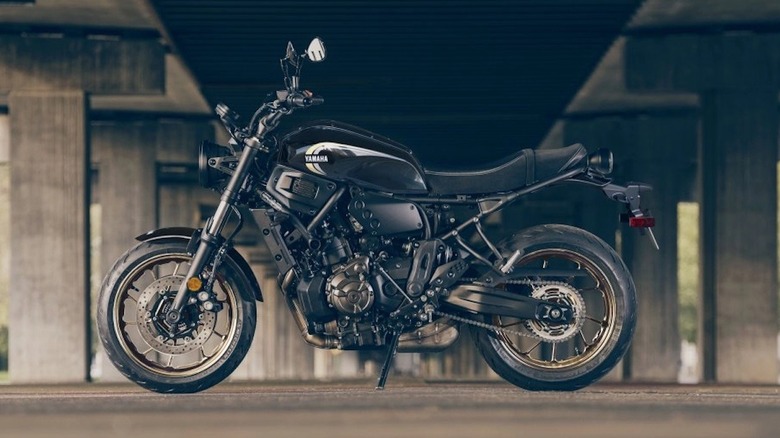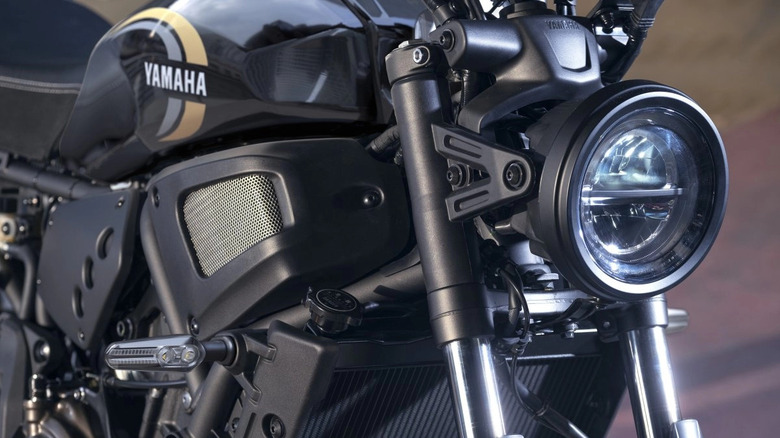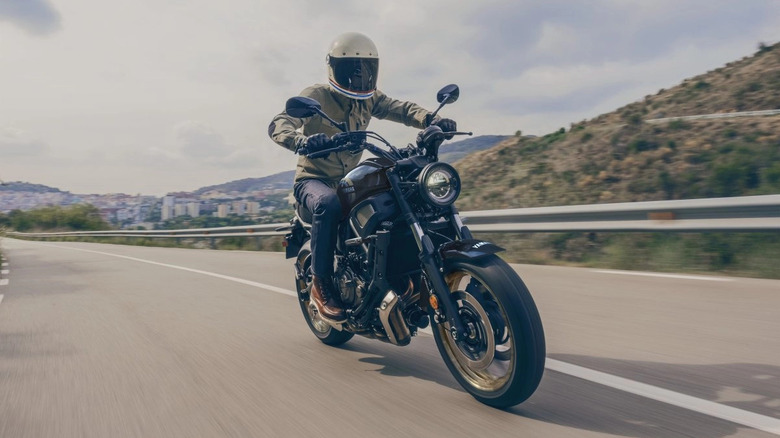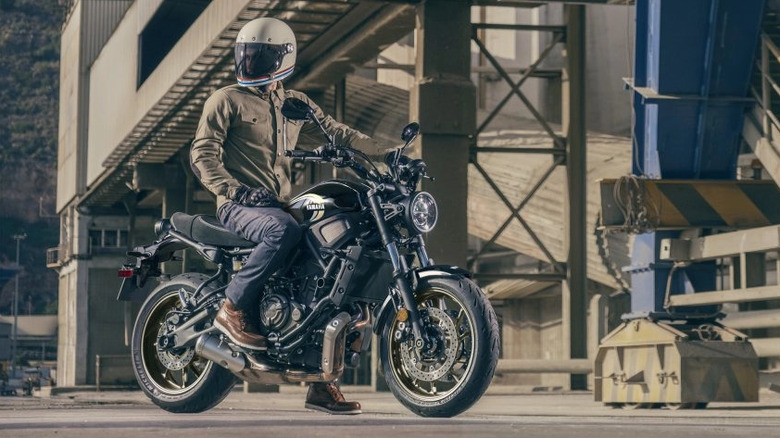Is The Yamaha XSR700 A Good Bike, And Is It Fast? Here's What Owners Say
They've got nostalgic café-racer styling, but Yamaha's XSR motorcycles haven't been around long. They were introduced in 2016, capitalizing on a trend towards what Yamaha calls "modern classic" motorcycles. So what do owners think of them? We dug deep into online forums to find user opinions and owner reviews, and the consensus is generally, yes, owners seem to really enjoy their XSR700s.
Owner reviews highlight the low-RPM torque and the fact that the power is still exciting even after years of ownership. The sound of the stock exhaust seems to be a high point for owners too, with a pleasant series of acceleration acoustics, but swapping it out for an aftermarket exhaust system really frees up some lovely sounds. Riders who picked the XSR700 for their first bike praise the bike's easy-to-ride nature, with a smooth clutch and easy customization options. The XSR, like other café bikes and naked sport bikes, has no fairings, so it's easy to access all the major components for maintenance.
Is it fast? Well, that's a matter of perspective. Riders have taken their XSR700's well above 130 mph (213 kph), which is certainly fast enough to break any speed limit in the United States (and then some), but it's not the kind of speed you'd expect from sport bikes. As such, the XSR700 will have a hard time keeping up with the fastest bikes in Yamaha history on a racetrack, but it's still plenty quick.
The XSR700's important stats and features
To get anywhere north of 100 mph, the XSR700 needs some pretty sufficient power. Underneath the XSR700's retro skin, it shares an engine and other components with some of Yamaha's naked and full-fairing sport bikes, the R7 and MT-07. The XSR700 uses a 689cc inline twin-cylinder engine known as the CP2 and owners are big fans of the powertrain. The CP2 engine, according to Yamaha's European specs, puts out 72 horsepower and 49.4 lb-ft of torque (73.4 PS and 67 Nm). That makes it one of the most powerful café bikes you can buy today.
It's also relatively lightweight, with a curb weight for the American XSR700 is just 410 pounds, and it's impressively efficient with a fuel economy estimate of 58 mpg. Yamaha doesn't release official acceleration stats, but some riders have been able to get the XSR700 to accelerate from zero-to-60 mph in under four seconds. So, it's powerful, lightweight, efficient, and quick off the line. Unfortunately, it doesn't have much in the way of creature comforts.
A common owner complaint is the lack of features on the XSR700, with some buyers calling it bare bones. It's true that the XSR700 does lack some hardware features like highly-adjustable suspension (only the rear spring has preload adjustment), but most other bikes in the segment have similarly basic equipment levels. Upgrading to larger and more powerful bikes like the XSR900 will get you some extra features, but it'll cost you a bit more cash.
Café competition is all around us
With positive reviews from owners, impressive stats, and proven real-world performance, the XSR700 sure seems like a good bike, but you'll have to try one out for yourself to see if it fits your needs. It's also important to consider some of its top rivals and how they're priced in comparison to the Yamaha. New from the factory, the 2025 XSR700 has an MSRP of $9,199 (including $600 destination fee). Honda's newest addition to the US market, the CB750 Hornet, has a similar size engine with competitive power for a little bit less money – it has an MSRP of $8,599. It has more angular naked street bike styling, though, so it might not appeal to café shoppers.
The new Suzuki GSX-8T offers a blend between modern and classic styling, but it's significantly more expensive than the XSR. The Suzuki checks in at $11,349. It does offer significantly more features, though, like a quick shifter and a 5-inch rider display screen. Kawasaki's retro-styled Z650RS is a strong rival to the XSR, offering a competitive starting price of $9,584 and similar power numbers (67 hp and 48.5 lb-ft). The Ducati Scrambler is stylish and fun to ride; it's also a strong choice in the class, but its higher trims are a bit pricey. Thankfully, the base model starts at $10,990.
Methodology
To find user reviews and get opinions on the XSR700, we searched forums and message boards. We weren't able to verify whether the posts and comments were actually from XSR700 owners, but we took their word for it. They gave their opinions on the XSR700 and its strengths, as well as its flaws. Opinions stated by multiple owners were prioritized.
For instance, it's likely that if multiple owners are commenting on the quality of the exhaust note or the impressive acceleration characteristics, those things will likely satisfy most riders, so that's what we included here. Overall, owners seemed satisfied with the bike and its riding characteristics. Don't take owner comments as gospel, though — head to the dealership yourself, start one up and take a test ride if they'll let you. Stats and specs on the bike were sourced directly from Yamaha, both here in the United States and in Europe.



